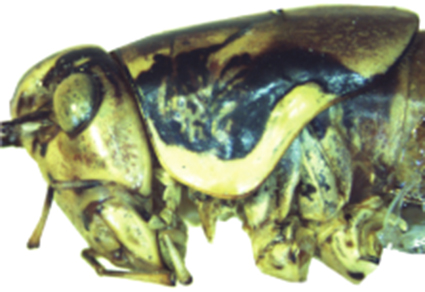Abstract
After a recent revision of the tribe Pholidopterini, the generic status of Apholidoptera becomes questionable and requires to be clarified by determining its phylogenetic position. The present study aims to obtain a phylogenetic tree using published DNA sequence data of Pholidopterini and representative sequences from Apholidoptera kurda, the only species of the genus. Phylogenetic analyses applied to the dataset, including three mitochondrial and one nuclear gene segments, suggested the Apholidoptera kurda within the clade constituting the most basal branch of Pholidopterini, containing five species of Aparapholidoptera. This clade consists of two sister subclades; the first consists of Apholidoptera kurda plus Aparapholidoptera pietschmanni, and the second species in the Aparapholidoptera distincta group. Two subclades share the last common ancestor about 12 million years ago, indicating a deep phylogenetic splitting. Further, both subclades are distinguishable by prominent morphological differences. Considering the ultimate ancestral ages of the con-tribal other genera and phenotypic disparity, we proposed each as a separate genus. This statement confirms the generic status of Apholidoptera with species content of the original description and requires retransferring Aparapholidoptera pietschmanni to Apholidoptera. This nomenclatural change also limits Aparapholidoptera with four species previously given in the Aparapholidoptera distincta group.
References
Avise, J.C. & Liu, J.X. (2011) On the temporal inconsistencies of Linnean taxonomic ranks. Biological Journal of the Linnean Society, 102, 707–714. https://doi.org/10.1111/j.1095-8312.2011.01624.x
Bouckaert, R., Vaughan, T.G., Barido-Sottani, J., Duchêne, S., Fourment, M., Gavryushkina, A., Heled, J., Jones, G., Kühnert, D., De Maio, N., Matschiner, M., Mendes, F.K., Müller, N.F., Ogilvie, H.A., du Plessis, L., Popinga, A., Rambaut, A., Rasmussen, D., Siveroni, I., Suchard, M.A., Wu, Ch., Xie, D., Zhang, C., Stadler, T. & Drummond, A.J. (2019) BEAST 2.5: An advanced software platform for Bayesian evolutionary analysis. PLoS Computational Biology, 15(4), e1006650. https://doi.org/10.1371/journal.pcbi.1006650
Çıplak, B. (2000) Systematic, phylogeny and biogeography of Parapholidoptera Măran (Tettigoniidae, Orthoptera). Systematic Entomology, 25, 411–436. https://doi.org/10.1111/j.1365-3113.2000.00112.x
Çıplak, B., Heller, K.G. & Willemse, F. (2009) Review of the genus Eupholidoptera (Orthoptera, Tettigoniidae): different genitalia, uniform song. Zootaxa, 2156, 1–77. https://doi.org/10.11646/zootaxa.2156.1.1
Çıplak, B., Yahyaoğlu, Ö. & Uluar, O. (2021) Revisiting Pholidopterini (Orthoptera, Tettigoniidae): rapid radiation causes homoplasy and phylogenetic instability. Zoologica Scripta, 50(2), 225-240. https://doi.org/10.1111/zsc.12463
Demirsoy, A. (1974) Some new Tettigoniidae (Orthoptera) from Turkey. Entomologische Mitteilungen aus dem Zoologischen Museum Hamburg, 4, 523–529.
Ebner, R. (1912) Wissenschaftliche Ergebnisse des Expedition nach Mesopotamian, 1910. Annales des K.K. Naturhistorischen Hofsmuseums, 26, 441–448.
Giribet, G., Hormiga, G. & Edgecombe, G.D. (2016) The meaning of categorical ranks in evolutionary biology. Organisms Diversity and Evolution, 16, 427–430. https://doi.org/10.1007/s13127-016-0263-9
Harz, K. (1969) The Orthoptera of Europe, Vol. I, W. Junk-The Hague, Göttingen, 749 pp.
Hendricks, J.R., Saupe, E.E., Myers, C.E., Hermsen, E.J. & Allmon, W.D. (2014) The generification of the fossil record. Paleobiology, 40, 511–528. https://doi.org/10.1666/13076
Karabağ, T. (1950) Some new Decticinae (Orthoptera: Tettigoniidae) from Turkey. Proceedings of the Royal Entomological Society of London, 19, 157–161.
Karabağ, T. (1964) Some new species and new records of Tettigoniidae from Turkey. Communications: Ankara Üniversitesi Fen Fakültesi Mecmuası, 13, 36–55.
Lanfear, R., Calcott, B., Ho, S.Y.W. & Guindon, S. (2012) PartitionFinder: Combined selection of partitioning schemes and substitution models for phylogenetic analyses. Molecular Biology and Evolution, 29, 1695–1701. https://doi.org/10.1093/molbev/mss020
Mařan, J. (1953) Contribution to the knowledge of the genus Pholidoptera Wesm.. Acta Entomologica Musei Nationalis Pragae, 27, 209–221.
Papadopoulou, A., Anastasiou, I. & Vogler, A.F. (2010) Revisiting the insect mitochondrial molecular clock: the Mid-Aegean Trench calibration. Molecular Biology and Evolution, 27, 1659-1672. https://doi.org/10.1093/molbev/msq051
Queiroz de, K. (2007) Toward an integrated system of clade names. Systematic Biology, 56, 956–974. https://doi.org/10.1080/10635150701656378
Rambaut, A., Drummond, A.J., Xie, D., Baele, G. & Suchard, M.A. (2018) Posterior summarisation in Bayesian phylogenetics using Tracer 1.7. Systematic Biology, syy032. https://doi.org/10.1093/sysbio/syy032
Ramme, W. (1951) Zur Systematik, Faunistik und Biologie der Orthopteren von Südost-Europa und Vorderasiens. Mitteilungen aus dem Zoologischen Museum in Berlin, 27, 1–431.
Ronquist, F., Teslenko, M., Van Der Mark, P., Ayres, D.L., Darling, A., Höhna, S., Larget, B., Liu, L., Suchard, M.A. & Huelsenbeck, J.P. (2012) Mrbayes 3.2: Efficient Bayesian phylogenetic inference and model choice across a large model space. Systematic Biology, 61 (3), 539–542. https://doi.org/10.1093/sysbio/sys029
Salman, S. (1981) Güney ve Güney Doğu Anadolu’da Pholidopterini (Orthoptera, Decticinae) Tribusu üzerine taksonomik araştırmalar. Associate Professorship Thesis. Atatürk University, Erzurum, 182 pp.
Stamatakis, A. (2014) RAxML version 8: a tool for phylogenetic analysis and post-analysis of large phylogenies. Bioinformatics, 30 (9), 1312–1313. https://doi.org/10.1093/bioinformatics/btu033
Uvarov, B.P. (1916) Orthoptera caucasica nova a cl. Don K. A. Satunin lecta. Bulletin Museum Caucase, 10, 45–53.
Uvarov, B.P. (1921) Some Orthoptera from the Causasus. Entomology Monthly Magazine, 7 (3), 49–50.
Ünal, M. (1998) A new genus and new species of Pholidopterini from Turkey (Orthoptera: Tettigoniidae). Center of Entomological Studies, Miscellaneous Papers, 51, 1–5.


